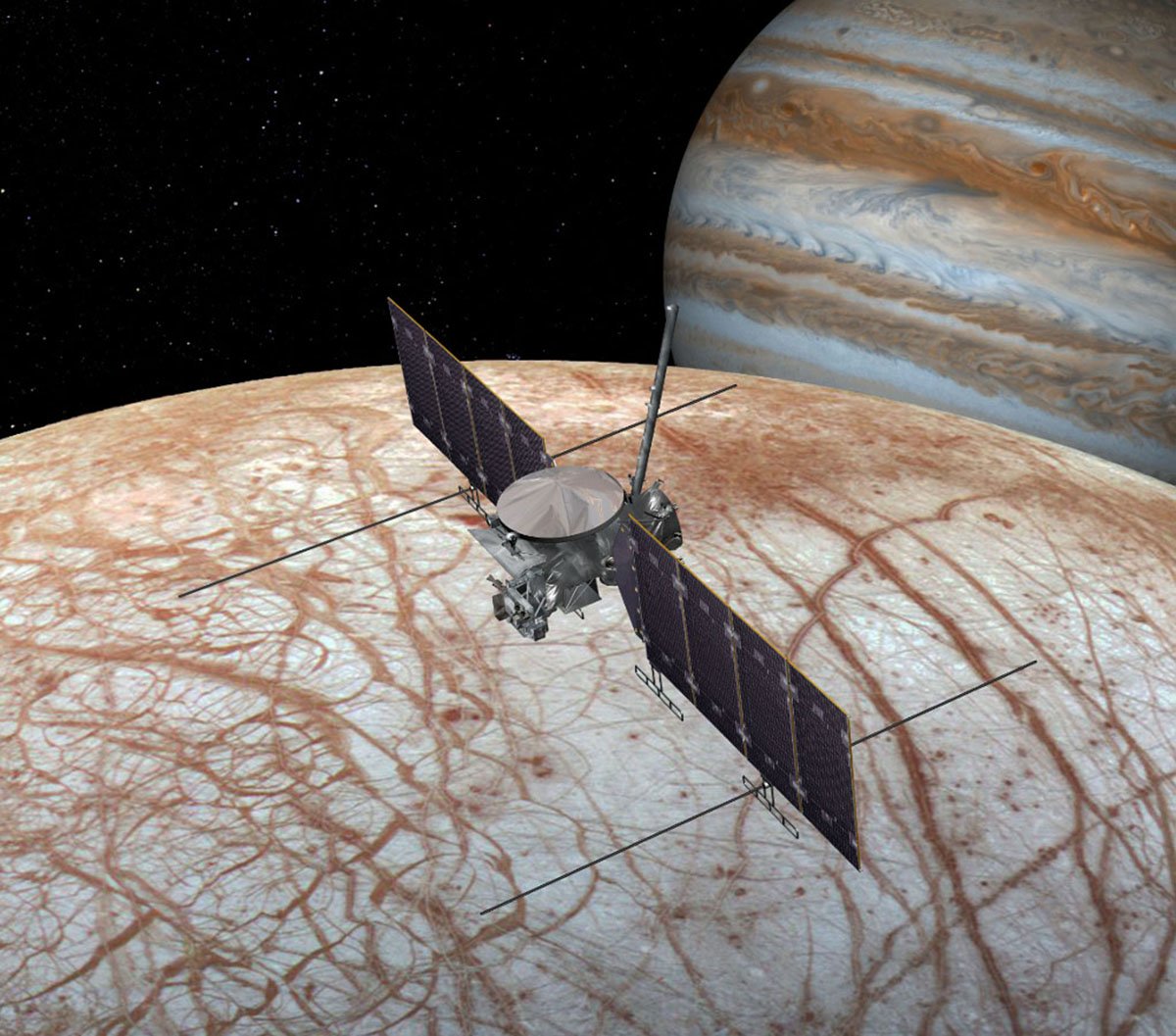The Juno spacecraft revealed many of Jupiter’s secrets. Jupiter is the largest planet in the solar system and a gas giant. It has dozens of moons, of which the most interesting is Europa. NASA’s scientists have for a long time wanted to explore the depths of the frozen oceans, which could potentially sustain extraterrestrial life. After proposing the first Europa-exploring mission back in 2015, the Europa Clipper mission may finally progress towards its launch in the 2020s.
NASA announced the decision to proceed with the development of the Europa Clipper, a specially-designed spacecraft that will explore Jupiter’s frozen moon Europa. The decision will allow the mission to reveal a complete design, construction, testing and finally the launch of the spacecraft and its instruments.
“We are all excited about the decision that moves the Europa Clipper mission one key step closer to unlocking the mysteries of this ocean world,” Thomas Zurbuchen, associate administrator for the Science Mission Directorate at NASA Headquarters in Washington said in a statement. “We are building upon the scientific insights received from the flagship Galileo and Cassini spacecraft and working to advance our understanding of our cosmic origin, and even life elsewhere.”
This news comes as a surprise considering that the mission was postponed for a later date. NASA conducted a special investigation on the Europa Clipper plans in May, finding several issues with the clipper that might prevent it from completing its mission as it was designed. In its documented report, NASA also stated that the lack of staff working on the mission could also prevent effectiveness of the Europa Clipper mission. That said, the mission needed to be postponed until all the criteria was met and a sufficient number of staff members was assigned who could solely focus on the flow of the mission.
The ultimate goal of the Europa Clipper mission is to explore the frozen surface of Europa and find out whether Jupiter’s moon could sustain conditions for life, focusing on special astronomy fields such as astrobiology. NASA plans to keep the mission cost effective and prepare the Clipper for launch at the earliest in 2023. However, the launch readiness date goes as far as 2025.
The Europa Clipper mission is a joint project of NASA’s Jet Propulsion Laboratory (JPL) in Pasadena, California that leads the project and the John Hopkins University Applied Physics Laboratory for the Science Mission Directorate.
The Europa Clipper is a spacecraft with a futuristic design that will make repeated close flybys of the icy moon in a looping orbit around Jupiter. The payload will sport several cameras and spectrometers that will produce high-resolution images and help determine the physical and chemical composition of its surface. It will also boast radar that will measure the thickness of the icy shell, and survey for signatures of subsurface lakes that match those on Earth, similar to Antarctica. Also, NASA plans to measure the strength and course of the moon’s magnetic field, which will help find the depth and salinity of the oceans beneath its surface. Finally, Europa Clipper will also be equipped with a thermal instrument which will survey the surface in search of recent eruptions of warmer water.





